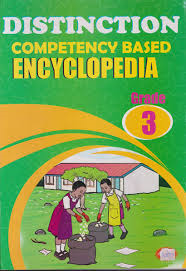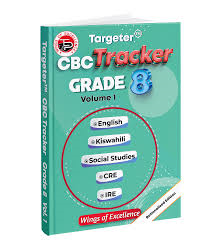PHYSICS NOTES AVAILABLE FOR ALL FORMS ALL TOPICS. TOPICAL QUESTIONS ARE ALSO PROVIDED.
BELOW IS A SAMPLE OF THE NOTES FOR FORM 1 CELLS AND SIMPLE CIRCUITS.
Electric circuitis the complete path along which the electric charges flow.
A simple electric circuit consists of a cell, a bulb, a switch and connecting wires.
When the switch is closed charges flows and the bulb lights.
A closed circuit ~ This is a circuit in which the switch is closed and the
current flows in a completepath.
An open circuit~ This is a circuit in which the switch is open and current does not flow.
Electric current –This is the flow of charge per unit time.
Where t = time in seconds
Q = It
The SI unit of current isAmpere (A).
Current is measured using an instrument calledammeter.
EXAMPLES.
- Calculate the amount of current flowing through a bulb if 72C of charges flow through it in 20seconds.
- Calculate the amount of current flowing through a bulb if 300C of charges flow through it in 2.5minutes.
- Calculate the amount of charge passing through a point in a circuit if a current of 5A flows for 1.5 minutes.
- A current of 10A was passed through an electrolyte for 1½ hours. Calculate the quantity of electricity used.
Some common circuit symbols
POTENTIAL DIFFERENCE(Pd)&THE ELECTROMOTIVE
FORCES(e.m.f)
The positive terminal of a cell has a higher potential than the negativeterminal.Due to this, current flows from the positive to the negative terminal.The higher the potential differences the stronger the current.
EMFis the voltage drop across the terminals of cells in an open circuit.It is the force of the battery that drives the current around the circuit.
Pdis the voltage drop across a component in a closed circuit.It is the part of the e.m.f that drives current across a component such as a bulb in a circuit.
The e.m.fis always higher than Pd.
BothPdandEMFare measured using an instrument calledVoltmeterand the SI unit isVolts(v).
NOTE: In a circuit theVoltmetershouldalways be connected in parallel with the cells or othercomponents whilethe ammeter is connected in series with the cells.
CELLS IN SERIES & PARALLEL CONNECTION
Cells in series
This is connecting the positive terminal of one cell to the negative terminal of another cell.
If the e.m.f of each cell is 1.5V then the total e.m.f is 1.5 + 1.5 + 1.5 = 4.5V
In a series connection the brightness of the bulb increases as more cells are added.
CELLS IN PARALLEL.
These are cells connected positive to positive terminal and negative to negative.
The totale.m.f is equivalent to that of a single cell ie1.5V.The circuit behaves as if only one cell is being used. Even if more cells are added, the brightness of the bulb does not increase because the current remains the same.
NOTE
- If one of the cell in parallel has less voltage, it will drain the other hence they shud not be connected.
- The current produced in a parallel connection is supplied for a longer time than in a series connection.
BULBS IN SERIES & PARALLEL CONNECTION.
Seriesconnection.
The bulbsdivide the voltage from the cells amongst themselves and theyhave the same current.If one bulb is disconnected, the other goes off.
Parallel connection
Eachbulbhas the same voltage as the cells. They are brighter than those in series. The flow of current is independent ie if one bulb is disconnected, the other continuous lighting with the same brightness.Parallel connection of bulbs is preferred in domestic wiring.
CONDUCTORS & INSULATORS
Conductorsare those materials that allow electric current to flow through them eg metals.
They have mobileelectrons that can move freely when e.m.f is connected.
In a conductor only the electrons move, the protons (+vecharges) do not move since they are held tightly in the nucleus.
When a conductor is connected to a cell, the flow of electronscreates an electric current in the opposite direction.
The electrons flow from the –veto +vewhile the electric currents flows from +veto-ve.
While dealing with electricity we only consider the electric current i.e from positive to negative.
Insulators– These are material that do not allow current to
flow through them eg wood, plastics. They have no mobileelectrons.
Electrolytes~These are Liquids that conduct electricity are. Eg
dilH2SO4,solution of NaCl
SOURCES OF ELECTRICITY
Electricity can be obtained from cells, batteries, generators and solar panels
CHEMICAL CELLS
They produce e.m.f due to a chemical reaction between two different metalelectrodes of different rates of reaction and an Electrolyte.
Chemical cells are classified either as primary or secondary cells.
PRIMARY CELLS
These are cells that cannot be recharged once the chemicals are exhausted.
These are two types of primary cells
- Simple primary cell.
- DryLeclanche
- SIMPLE PRIMARY CELLS(wetcell)
It consists ofelectrodes ofcopper and zinc dipped in dilute sulphuric acidsolution.
(Zinc is more reactive than copper in the reactivity series)
When the switch is closed, the two electrodes reacts with the acid and a current is generatedmaking the bulb light.
The zincelectrode is the most reactive and hence is the –ve terminaland is called the Cathode.While the copperelectrode being the less reactive is the+veplate and is called theAnode
The current flows from the copper plate(+ve)to zinc plate.(–ve)
DEFECTS OF A SIMPLE CELL
It has two defects ie Polarization and Local action
- Polarization
This is the formation of H2 gasbubbles around the copper plate.
As the reaction continuous hydrogen gasbubbles are formed on the copper plate which blocks electrons from reaching the copper plate in the solution.
This increasesinternal resistance and hence the bulb goes off.
Polarization is minimized by adding a depolarizer eg potassium dichromate.
The depolarizer combines with the hydrogen gas on the copper plate to form water which dissolves in the electrolyte.
2H2 + 02 = 2H2O
- Local action
This is the eating away of the zinc plate as it reacts with the acid.The zinc plate reacts with the acid and itis eaten away.
Local action can be reduced by coating the zinc plate with mercury in a process calledamalgamation.
A simple primary cell can also be made by dipping the two electrodes into a lemon as shown below.
The lemon being acidic acts like and electrolyte.
- DRY LECLANCHE CELLS
It consists of a zinc case, ammonium chloride paste, a carbon rod and manganese IV oxide mixed with carbon powder
During the working of the cell, zinc reacts with NHCl paste and is converted to ZnCl2and hydrogen gas is produced.
TheManganese (IV) oxideacts as a depolarizer by convertingthe H2 gasproduced to water. This makes the cell wet after being used up.
The carbon powder only acts as a catalyst by speeding up the working of MnO2.
The zinc case is the negative electrode while the carbon rod is the positive electrode.
NOTE: Large currents should not be drawn from dry cell within a short time.
SECONDARY CELLS (ACCUMULATOR)
These are cells that can be recharged by passing electric current through them.
There are two types of accumulators
- Lead acid accumulators
- Alkaline accumulators
LEAD ACID ACCUMULATORS.
A lead acid accumulator consists of +veand -veplates made of lead metal and lead oxide respectivelydipped indilH2SO4acid. The current carrying capacity of a battery is determined by
- The number of plates.
- Surface area in each cell.
A12V lead acid accumulator has six cells connected in series each of2V.
When fully charged,the accumulator has an e.m.f of about13Vwhile the relative density is 1.3.
The two quantities that determine whether a battery requires charging are:
- m.f of the battery~When the voltage drops to 1.8Vper cell.
- Relative density of the acid~When the RDof the acid reducesto
1.12dueto formation of water.
The accumulator is recharged by connecting a direct current(dc)to the battery positiveto positive terminal and negative to negative terminal of the charger.
CAPACITY OF LEAD–ACID ACCUMULATOR
This is the amount of current that can be drawn in a given time from a battery. It is the total amount of chargeQ=Itand it is expressed in Ampere –hour (Ah).
EXAMPLE.
- A battery supplies a current of 5A for 10 hours. Calculate its capacity.
- A battery rated 60Ah is supplied with a current of 4A.For how long will it work?
- A battery rated 40Ah supplies a current for 120minutes. Find the current.
- A battery supplies a current of 5A for 180 minutes. Calculate its capacity.
CARE AND MAINTENANCE OF ACCUMULATORS
- Never short circuit the battery.
- Do not overcharge the battery.
- Large currents should not be drawn from the battery for along time~it damages the plates.
- It should not be left in discharge condition for along period.
- The terminal should always be kept clean and greased.
- The level of electrolyte should always be kept above the plates
- It should not be placed directly on the ground. Use a wooden block.
- When recharging, leave the caps open or loose to allow the Hydrogenand Oxygengas formed to escape~H2and O2 gas are highly flammable and hence can explode.
- Avoid direct flame, since the H2 and O2 gas produced can easily explode.
ALKALINE ACCUMULATORS
These accumulators usealkaline electrolyte (base) mostly (KOH). The common type is the nickel cadmium ornickel iron.
Advantages ofalkalineaccumulators overlead acid
accumulators.
- Large currents can be drawn from them.
- They are lighter (portable) than lead acid.
- They require very little attention to maintain.
- They can be stored in discharge condition for longer
time without getting damaged.
Disadvantages ofalkalineaccumulators
- They are expensive
- They have a lower e.m.f per cell.

